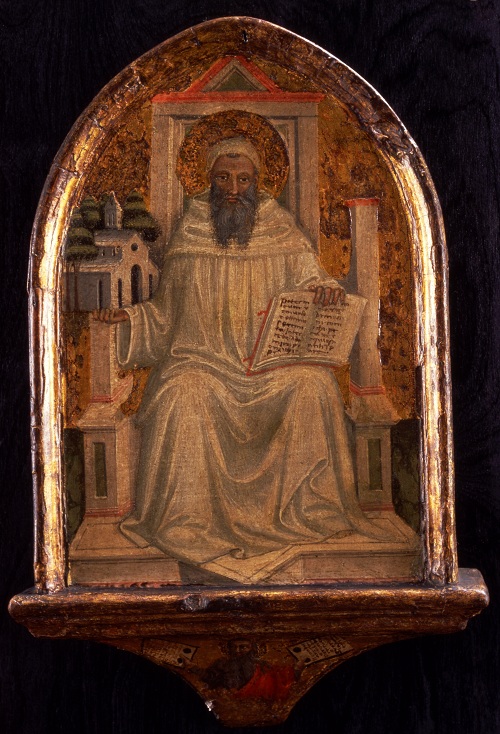Saint Romuald
Florence, second quarter of the 15th century
Tempera on wood
34.3 x 22.8 cm
This panel formed the main part of a standard which was carried on processional occasions.
The open book is inscribed with the words that the spectators would have used: ‘My father Romuald, most excellent hermit, intercede with the Lord for me’.
Saint Romuald (about 950 – 1027) wears a Benedictine habit and holds a model of a church. This refers to his role as the founder of various hermitages and communities which became a new monastic order, the Camaldolese.
Purchased 1950 (No.50.6)

